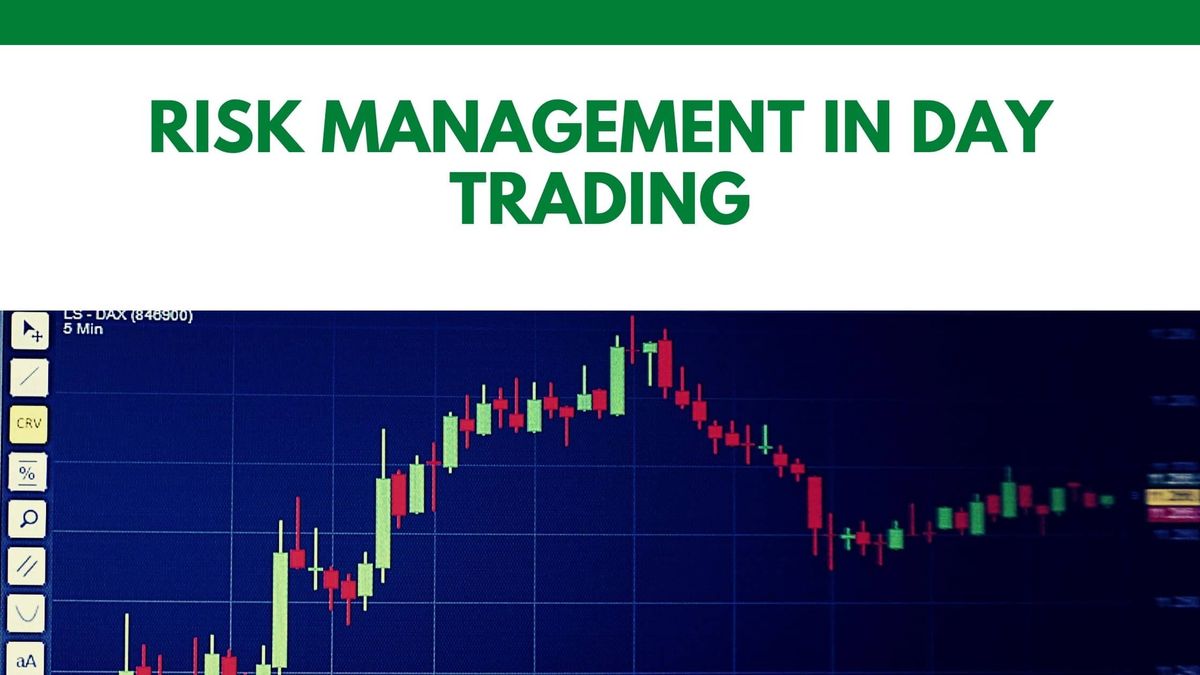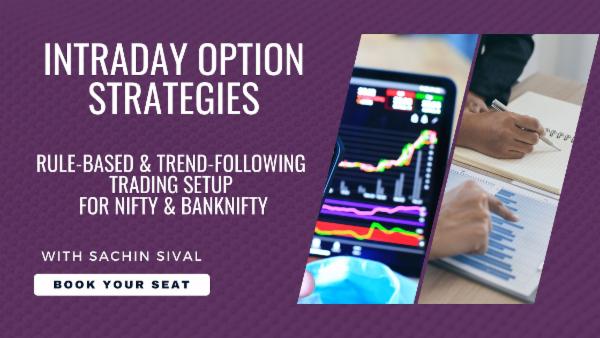Best techniques for Risk Management in Day Trading

Hello guys. I hope you all are doing good. If you are a beginner and wanted to know what is intraday trading and Risk Management in Day Trading? Then you are at the right place. In this article, I’m sharing a complete guide about what risk is there and how to manage it effectively for day trading and how beginners can reduce their losses and earn money easily. So read this post till the end to know how I take risks and how you can too, to generate your daily return.
We are talking about Intraday Trading, then many of you are well aware that intraday trading has a high degree of risk if we compare it with long-term investment or even with short-term traders in the market. To be profitable in the intraday market, one has to be a good risk-taker.
In this article, I will share, what are major risks in intraday. and a beginner like you, how you can trade effectively by minimizing them and managing them in a better way. What techniques professionals are using for risk Management in day trading and what all you need to trade effectively? So without wasting your time, let us jump to the first section i.e. Introduction to Risk Management.

Introduction To Risk Management in day trading
Intraday trading just needs double precautions and steps to mitigate the risks if you compare it to any other form of trading. This is actually the true fact that one can’t avoid losses, you have to build your trading framework in such a way that any loss should not destroy your foundation and plan.
Risk Management helps cut down the losses. It also helps traders from loss of their money. When a risk occurs the trader suffers from losses but one needs to take care of the risk management intraday. Risk sometimes is manageable, and sometimes not. If the risk can be managed, traders can open themselves up to making money in the market. But don’t you think risk-taking management in intraday trading. Trust me, intraday trading with risk management makes the trader’s life easier but not that much easier as compared to the long-term investment.
What is Intraday Trading?
Intraday Trading refers to trading when you buy and sell stocks within the same trading day before the closedown. Intraday Trading is well known by the name of day trading. Day traders are those day traders who execute intraday strategies to profit off of price changes for a given asset.
There are several risk management factors that should be included in your trading plan to ensure that you do not risk everything in the markets. Intraday Trading is considered to be risky when one is investing without precautions. Intraday or Day Trading does have a wider scope for knowledgeable market investors, one has to adapt the risk management system that makes your trading more interesting.
- I have written a deep article about What is Intraday Trading? The best guide for beginners. Read the whole article here.
What kind of stocks to choose for Intraday Trading?
Intraday traders, which you need to choose for intraday trading before the closing of the market. You need to choose to have enough liquidity for executing the trades. We recommend high-liquid stocks like large-cap stocks. This can also minimize the chances of your trades impacting the shares to the selected stocks.
Risk Management Factors and Strategy
Planning your trades
Have to ever hear about the planning? Well before even entering into the market or setting your targets, you need to plan a bit about trade. You have to decide in which stock you should invest in, whether you can afford to invest, how much risk can you take while investing? The steps of fixing your entry and exit point whether on loss and target.
Never enter a trade without understanding all the factors associated with it. Always keep in mind all the limitations of the market and the market situations, analysing the market situation is one of the important steps. Before buying and selling your stocks in intraday trading. How does it help? This will help you in minimizing the risk up to the great extent.
Putting Stop Loss right points before entering the trade
The importance of placing a stop loss at the time of intraday trading simply cannot be ignored. A stop-loss is an order that you place at the price of direction opposite to your desired price direction so that your losses are restricted. A stop loss should be placed at the same time while entering into the market so that you already know about the loss that will occur in the future, in case if it happens.
Using trailing stop loss as your profits go up
Where a stop loss is fixed then your exit position to cut losses, a trailing stop loss is used when you want to make sure that the profits you earned do not get washed off due to any sudden market change.
For instance: If you have purchased a stock that costs Rs 2000, with a stop loss of Rs 1900 and your target of Rs 2500, and your stock starts moving towards Rs 2500, then you can shift the stop loss with Rs 2000 that will protect your investment. Henceforth, you can shift the stop loss to Rs 1200, to lock in the profit of Rs 200 per share and similarly can keep moving the stop loss order once you achieve the target.
Diversifying the trades across sector and segments
Diversification of your invested amount across different sectors is extremely crucial. This is important because, at a macroeconomic level, if any sudden new affects one sector’s performance and if all your holdings are in the same sector, then all invested capital might be lost. Hence, you must invest your money in stocks from different sectors so that any sudden volatility in one does not bring your entire portfolio down. Something like you is not keeping things in one place. This is quite risky but diversifying the trades in different sectors and segments may give you profit.
Hedging and Buying (Put Options or Upside Call Options)
Hedging is the method of risk management which is only the most seasoned of the players. The option of an instrument gives you the right but you are not allowed to buy or sell any in the markets in a particular flow. Therefore, you have two options one is the put option and the other one is known as a call option. A put option allows you to sell the security and a call option gives you the option to buy the security within a fixed period of time. The time duration is called the expiry.
For instance: If you are purchasing shares of any company with price growth, but you want to mitigate your risk considering the situation that the share prices fall. Then you can buy a put option to the same company. If the strike price seems to be below the expected prices to fall further. If the prices do not fall, then you are ready to hit the target in the cash segment position. Therefore, if you mitigate and start facing the loss then you can use the out option for selling the stocks in the falling price.
Risk Management Techniques
I hope now you have understood how important is risk management in day trading. Here are some of the risk management techniques that one should keep:
Support and Resistance
Technical analyses are used in determining which stocks one should buy. Stocks fluctuate within price range, the lower point of price ranges are known by support. These price ranges and price points can be determined by good observation with historical data using different tools and moving averages.
A share usually tends to rise near its support price and if it’s near its resistance price that tends to drop in value. This is not always the case in new market developments that can greatly affect the stocks’ futuristic market trends.
Choose Exit Points
Once you’ve purchased a share, you must know when to sell it in the market and get out. A stop loss is a price below the support at which further loss is likely. Similarly, one should also choose a price to sell at a profit, in the market. This is usually set near the resistance.
Expected Return
One has to be clever enough to analyse the market situation for the expected return. The factors which are mostly expected to give you future profits. The strategy that people should follow has to be strategic and dynamic. Your expected return strategy depends on the market knowledge that you have.
Highlight
- Intraday comes with a higher degree of risk compared with long-term investment or even short-term market hooks.
- Stock fluctuation, the lower point of the price range called a Support and the ceiling, a resistance.
- You have to calculate the expected return. Compare the expected return across the stocks and choose the stocks that have the highest expected return value.
- Stop-loss is a price at which you sell your shares for avoiding future losses.
Tips for risk management in day trading
- Trade-in highly liquid stocks, like large-cap stocks, like this, will facilitate easy buying and selling. Large-cap stocks will be volatile due to the close with a high volume of trade.
- Always analyze the market before trading and set stop loss/take profits prices, calculate the execute return
- The price at which you have purchased the shares shouldn’t be settled at the stop-loss price. Do this to eliminate the risk of incurring a loss, but often, large institution traders easily manipulate the market.
- Look at the past trends and analyze the trends in the market for the futuristic situation of the company.
- Look at the past trades and learn from your mistakes that you have made in trading.
How More Effectively Set Stop Loss Points?
Setting the stop loss and taking the profit points often with the market analysis and fundamental aspects plays a vital role in timing. For example: If a trader has a stock ahead of earning, they actually analyze the fundamentals and want to sell before it hits the market. It is all about the market expectation: it can be too low or can be high.
Moving towards the averages represents the popular way to set these points. They are extremely easy to calculate and you can track it widely. The Key moving averages include the -5, -9, -20, -50, -100, and -200 the day averages. These are the sets that are applied in the stock charts and determining the stock price has been in the past trends with the new resistance level.
So, the other great way to take-profit levels is on support or resistance trend lines. These show you the previous highs and lows that can occur on significant, above-average volume. The key is determining the levels at the price that is much reactive with trend lines and of course on high volume.
Here are some key considerations:
- Longer-term moving averages for more volatile stock reduces the chances that are meaningless with the price that triggers a stop-loss that will be executed.
- Adjusting the moving averages to match the target price ranges.
- Stop losses should be closer to prediction up to 1.5 times to the current high-to-low range.
- The market volatility adjusts the stop loss. When the stock price seems neutral then stop losses seem to be tightened.
- Use known fundamental events such as earning releases, as key time periods to be in or out of the trade to be in the position of volatility and uncertainty can rise.
Calculating the Returns
Setting the stop loss and take profit points are also necessary for calculating the expected returns. This can be said important as it forces trades to think about the trades and rationalize them. It does give the systematic way to approach in the market and compare the previous market trends
The result of the calculation with an expected return for the active trader measures the opportunities for determining the stocks to trade. The probability of gain and losses are calculated by using the historical breakouts and the breakdowns. This helps the trade in day trading to analyse the current situation. For the experienced trader, it is easy to analyse the risk in the market whereas for the newbies it does take time.
Your return depends on you not on any market trend make sure you follow good techniques to be in trend.
Downside Put Options
If you are approved for options that you trade in, buying the downside put options, sometimes known as a protective put, can also be used as a hedge to stem losses from the trade that turns sour. A put option gives you the right, the obligation is to sell the underlying stock with specified price before your option expires.
Trading Psychology
Trading Psychology refers to the emotions with the mental state that helps you to dictate the success and failure in the trading securities. The psychology represents the various aspects of an individual character and behaviour that influence the actions with the market trends. Trading psychology can be as important as the other attributes such as experience, knowledge and skill in determining the trading success.
Risk taking plays critical aspects of the trading psychology, since a trader’s implementation of these aspects to the critical trading plan. While fear and greed are the most commonly associated with trading psychology, whereas emotions that drive the trading behaviour with traders hope and regret.
The psychology seems to be a bit different when it comes to technical analysis that helps you in trading decisions. This trading technical analysis works as a security charting that can provide a broad array of insights on the security’s movement. It is much helpful in spotting trends for buying and selling the opportunities, it requires an understanding and intuition for the market movements that derives from an investor’s trading psychology.
The number of technical aspects that should be kept in mind are the chart’s that help you in the futuristic execution of the market. The chart helps you to analyse the full market trends with its previous data. Day trading has always been technical but managing the risk makes it toughest, the smart investors know about the market trends hence, for them the managing the risk is easy whereas the beginners should start analysing the techniques.
Market trends eventually fluctuate so they are not 100% true but analysing the technical terms will help you in that. Market was never easy to handle and it won’t be handled, so start with understanding the technical terms as well. You will end up analysing the risk management techniques and market analysis.
Conclusion: Risk Management in Day Trading
All the information mentioned above may not be easily understandable especially for the amateurs to intraday trading. Many of you might not have heard about these terms but I assure you this article will help you in starting up with intraday trading. I tried making it easy for beginners as well. However, if you have any doubts then you can ask in the comment section below. If you are in a big-sized portfolio, it is extremely important that you may utilize the methods of protection from the market uncertain risks!
Post your comments in the comment box if you have any query related to Risk Management in Day Trading and how to tdeal with it? You can ask any question related to trading in the comment box.





